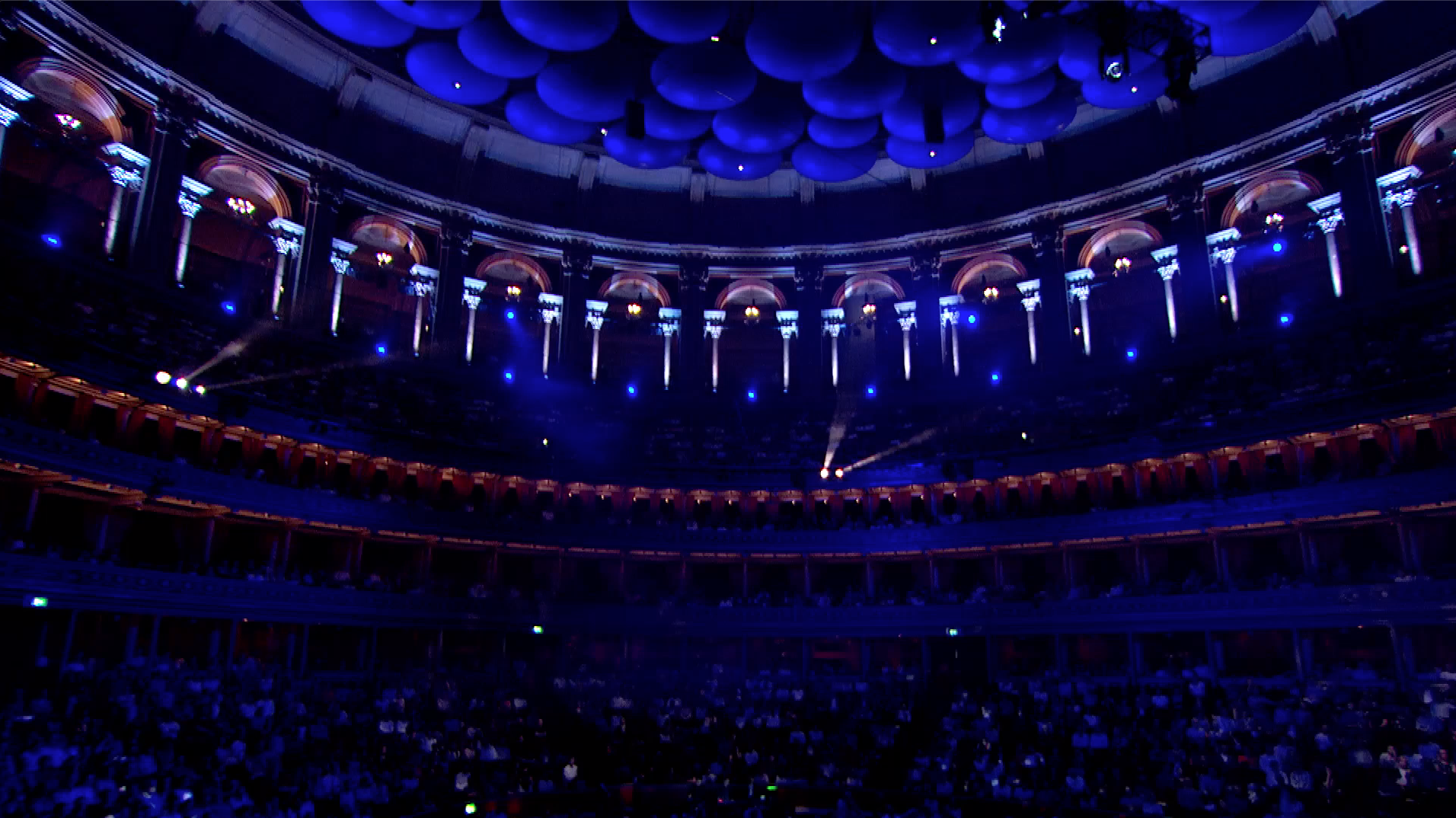Rattle, Uchida and the LSO
Sunday 30 August, 7.30pm–c9.00pm
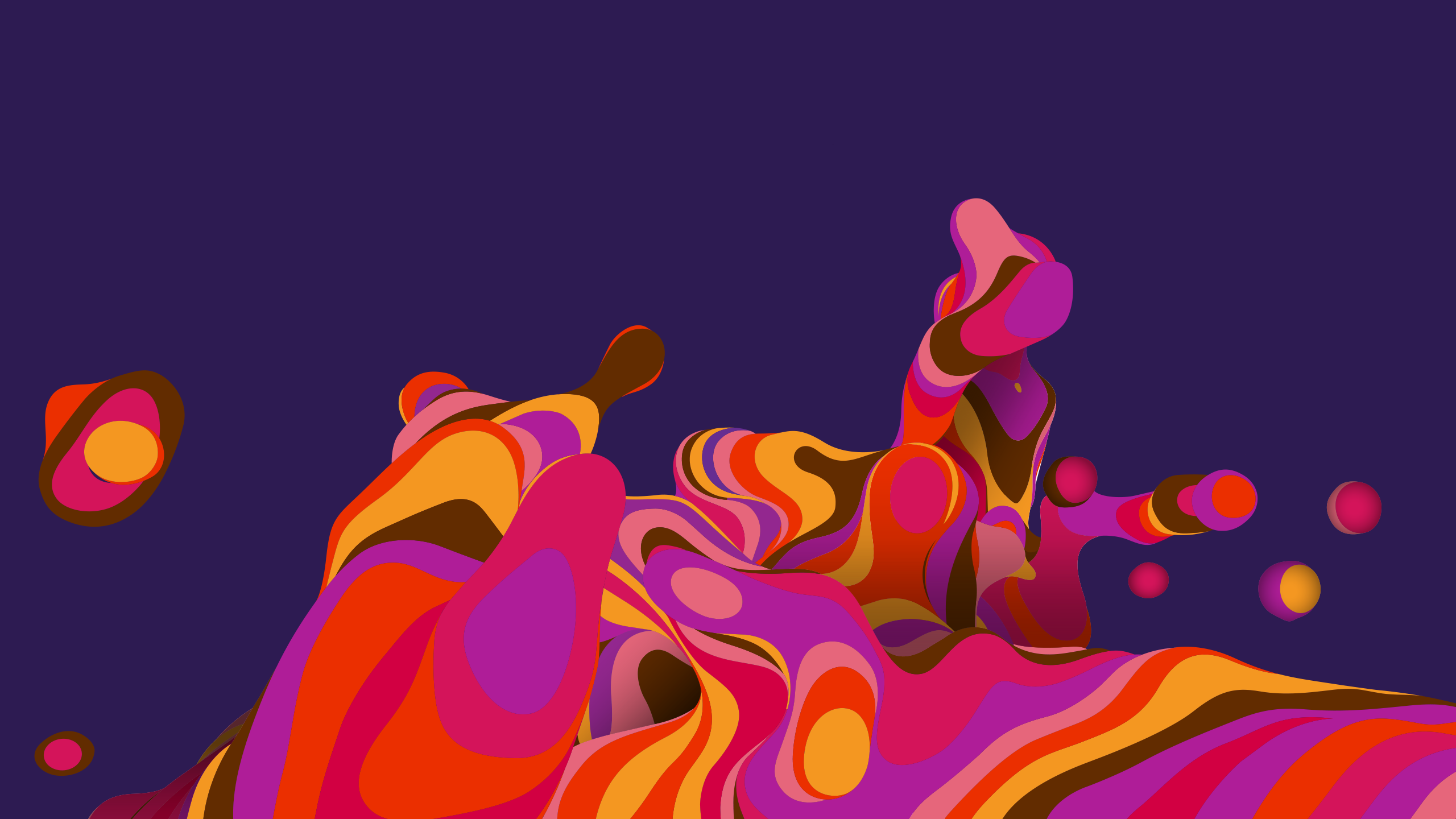
Giovanni Gabrieli, ed. Eric Crees
Sacrae symphoniae (1597) – Canzon septimi et octavi toni a 12 4’
Edward Elgar
Introduction and Allegro 14’
Ludwig van Beethoven
Piano Sonata (quasi una fantasia) in C sharp minor, Op. 27 No. 2 ‘Moonlight’ – 1st mvt 7’
György Kurtág
… quasi una fantasia … 10’
Giovanni Gabrieli, ed. Eric Crees
Sacrae Symphoniae (1597): Canzon noni toni a 12 4’
Thomas Adès
Dawn c7’
±«Óătv commission: world premiere
Ralph Vaughan Williams
Symphony No. 5 in D major 35’
Mitsuko Uchida piano
London Symphony Orchestra
Sir Simon Rattle conductor

This concert is broadcast live by ±«Óătv Radio 3 and on ±«Óătv Four at 8.00pm. You can listen to any of the 2020 Proms concerts on ±«Óătv Sounds or watch on ±«Óătv iPlayer until Monday 12 October.
Welcome to tonight’s Prom
Sir Simon Rattle, Mitusko Uchida and the LSO tonight prove that restrictions – and, in this case, those resulting from the coronavirus pandemic – can be turned to creative advantage.
To that end, tonight’s programme of music – spanning over 400 years – explores the ways in which various smaller groups can interact.
Written for Venice’s St Mark’s Basilica – with which the Royal Albert Hall shares a cavernous interior – Giovanni Gabrieli’s canzons make a play of spatially separated ‘choirs’ of brass instruments.
While Elgar nestled a quartet of soloists within the larger string group of his Introduction and Allegro, written in 1905 for tonight’s orchestra, works by Beethoven, Adès and Kurtág focus on the role of the piano – whether alone, as part of an ensemble or surrounded by satellite groups of instruments.
Tonight’s largest ensemble of players join together Vaughan Williams’s Fifth Symphony, which explores a different kind of dialogue – that between the folk and symphonic elements in the composer’s music. After hearing the symphony’s first performance – conducted by Vaughan Williams at the Proms in 1943 – Adrian Boult (who had recently become a key Proms figure) was prompted to write to the composer: ‘Its serene loveliness is completely satisfying in these times and shows, as only music can, what we must work for when this madness is over.’ An observation as prescient today as it was then.
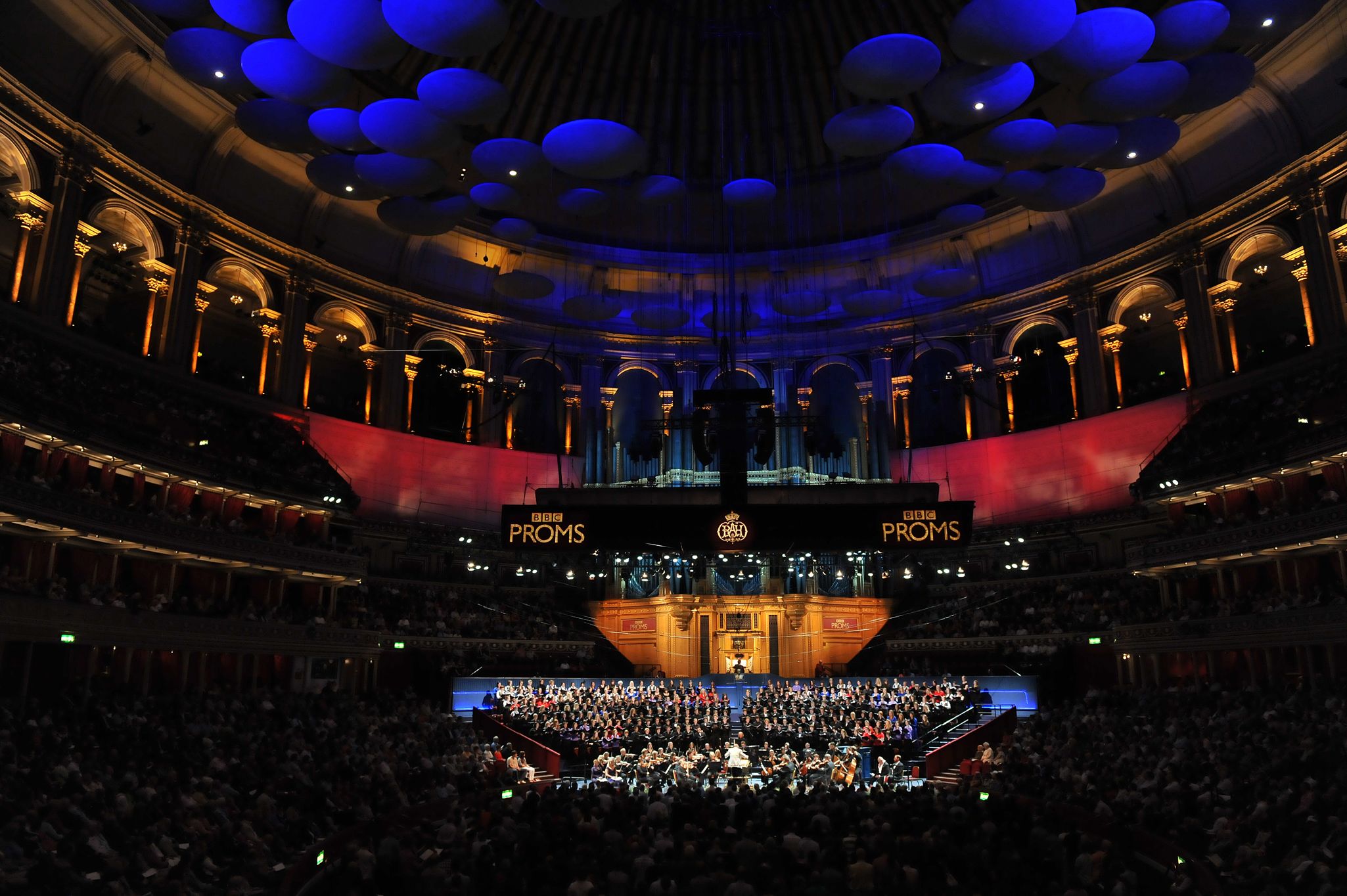
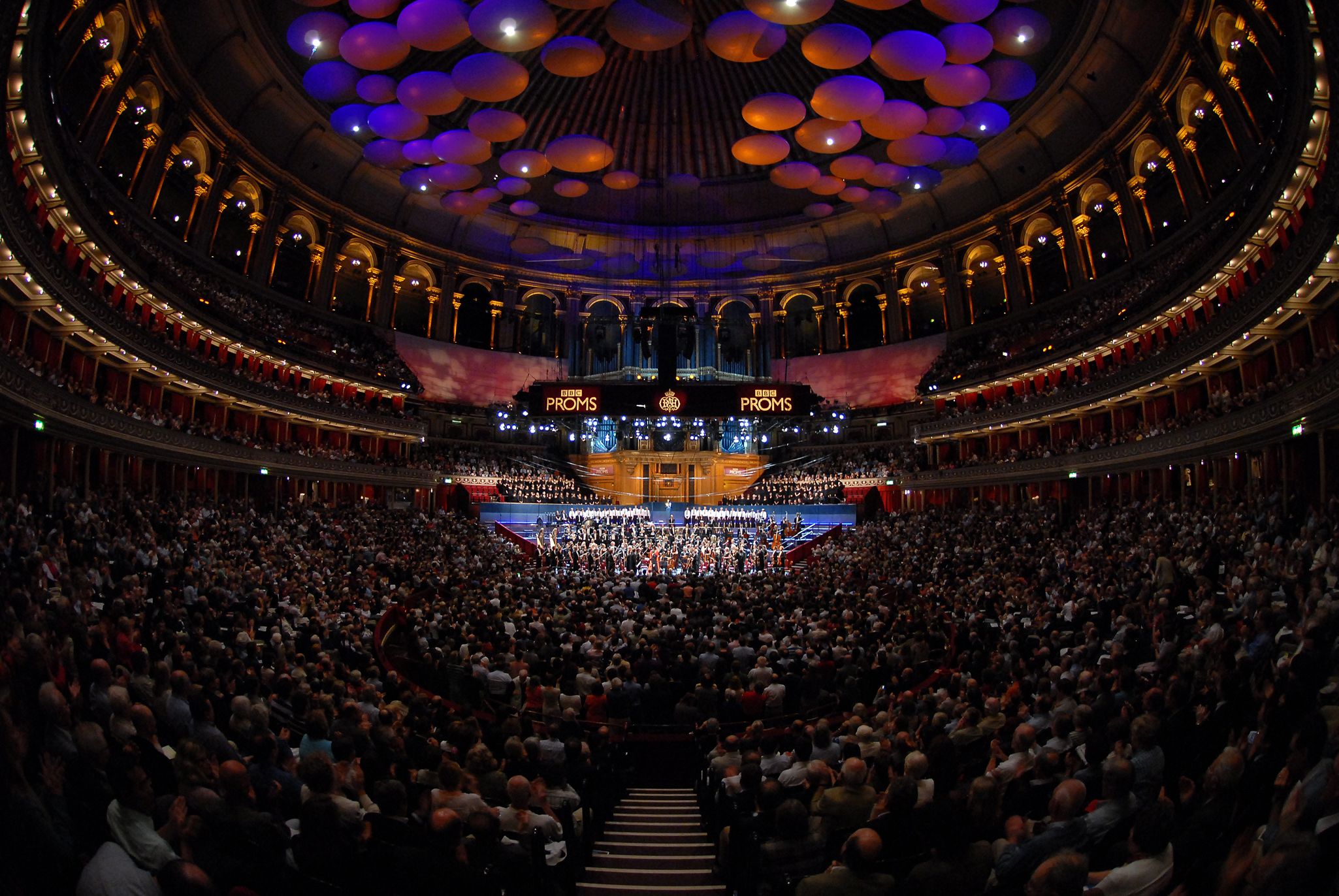
Welcome to tonight’s Prom
Sir Simon Rattle, Mitusko Uchida and the LSO tonight prove that restrictions – and, in this case, those resulting from the coronavirus pandemic – can be turned to creative advantage.
To that end, tonight’s programme of music – spanning over 400 years – explores the ways in which various smaller groups can interact.
Written for Venice’s St Mark’s Basilica – with which the Royal Albert Hall shares a cavernous interior – Giovanni Gabrieli’s canzons make a play of spatially separated ‘choirs’ of brass instruments.
While Elgar nestled a quartet of soloists within the larger string group of his Introduction and Allegro, written in 1905 for tonight’s orchestra, works by Beethoven, Adès and Kurtág focus on the role of the piano – whether alone, as part of an ensemble or surrounded by satellite groups of instruments.
Tonight’s largest ensemble of players join together for Vaughan Williams’s Fifth Symphony, which explores a different kind of dialogue – that between the folk and symphonic elements in the composer’s music. After hearing the symphony’s first performance – conducted by Vaughan Williams at the Proms in 1943 – Adrian Boult (who had recently become a key Proms figure) was prompted to write to the composer: ‘Its serene loveliness is completely satisfying in these times and shows, as only music can, what we must work for when this madness is over.’ An observation as prescient today as it was then.


Music at a Distance
Distance lends enchantment, they say. Certainly it does in tonight’s Prom, not just because the current pandemic allows us to hear an orchestra only digitally and from a great distance. Also because of the pandemic, the orchestra’s players have to be well separated, within an otherwise empty auditorium, and it is these conditions that Sir Simon Rattle and the London Symphony Orchestra turn into advantages. We may be more aware now of spaces and distances within the orchestra: groups of strings in dialogue, trumpets blazing through from the back, the gentle plinks of the harp filling the air. And some of the music will open out the aural panorama further, as we hear groups sounding from different points within the Royal Albert Hall.
Giovanni Gabrieli (c1554/7–1612) ed. Eric Crees (born 1952)
Sacrae symphoniae (1597) – Canzon septimi et octavi toni a 12
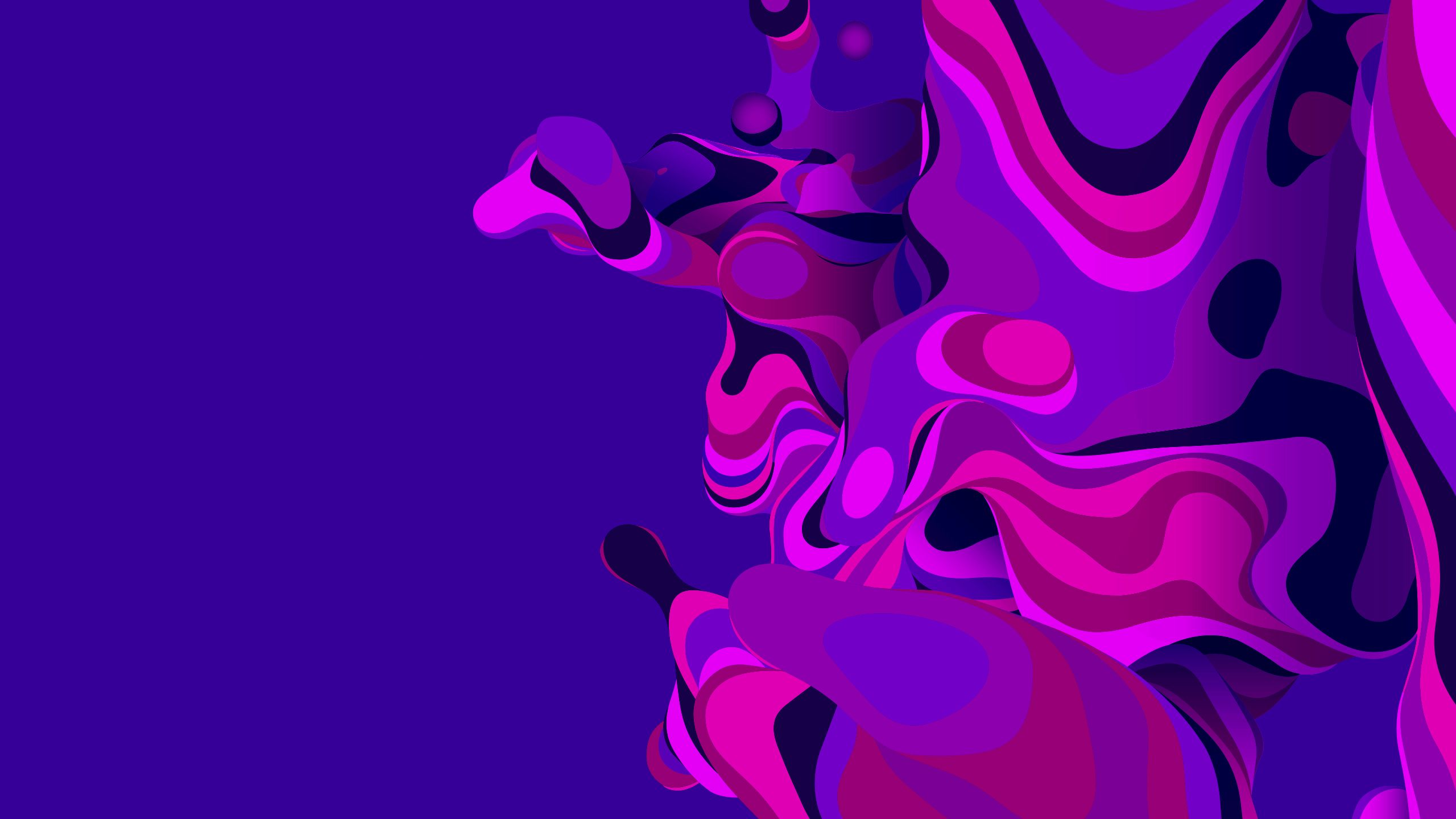
It all starts with melodies from a distant epoch, which sound out in two pieces from a compendium Giovanni Gabrieli published in 1597, midway through the quarter-century he spent as principal composer at St Mark’s in Venice. Incorporated in the Byzantine architecture of that church are numerous galleries, and Gabrieli made use of these in writing for separated groups of performers: singers and players or, in his instrumental canzons, just the latter.
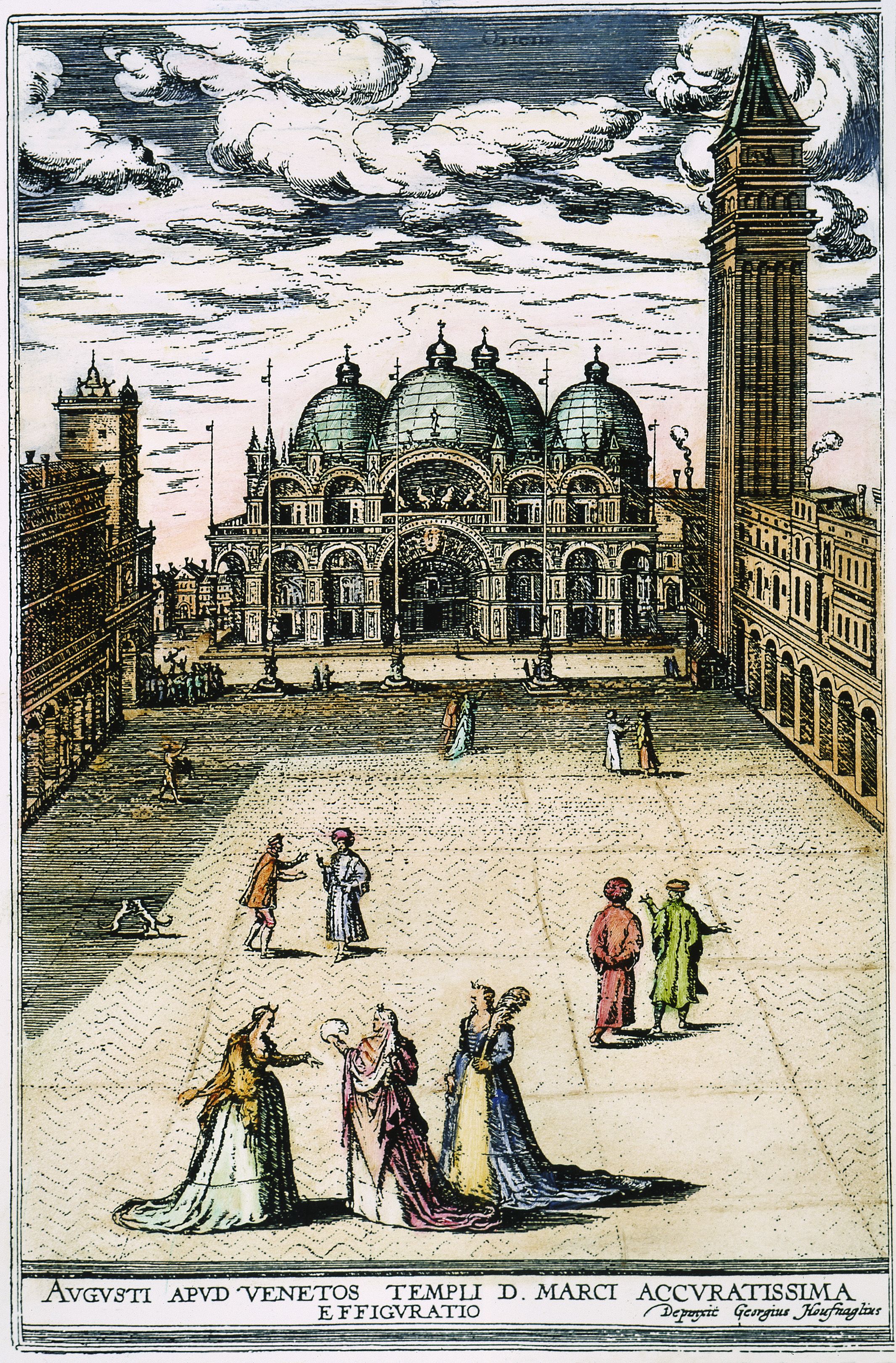
St Mark’s, Venice, where Giovanni Gabrieli succeeded his uncle, Andrea (Granger/Bridgeman Images)
St Mark’s, Venice, where Giovanni Gabrieli succeeded his uncle, Andrea, after 1585 (Granger/Bridgeman Images)
First we hear his Canzon septimi et octavi toni, an invention in the seventh and eighth of the eight ‘tones’, or scales, of Gregorian chant, here corresponding roughly to G major and D major. Themes are passed from one to another of the three groups. A sharp break brings in triple time, after which comes a reprise.
Edward Elgar (1857–1934)
Introduction and
Allegro, Op. 47
(1904–5)
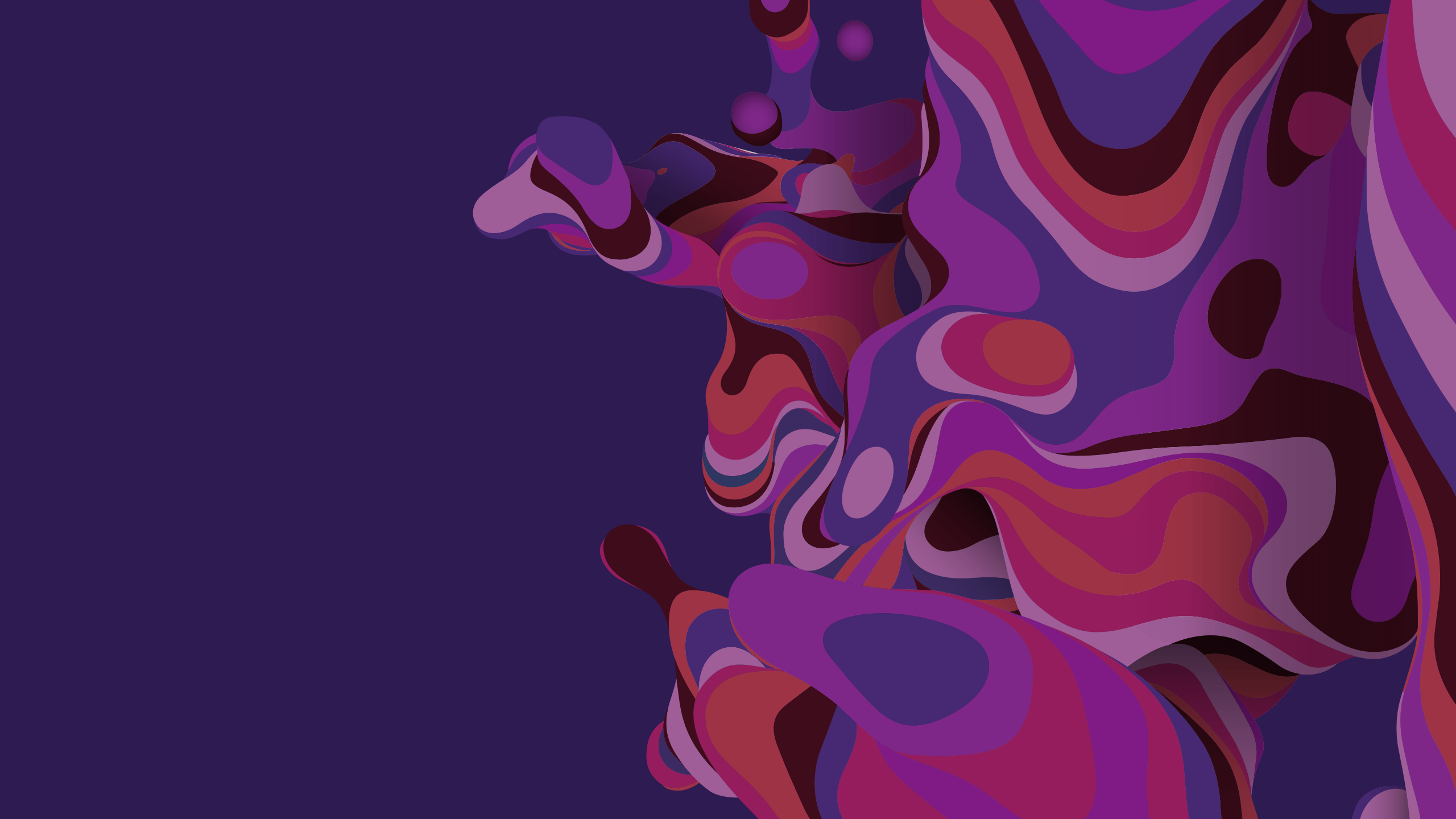
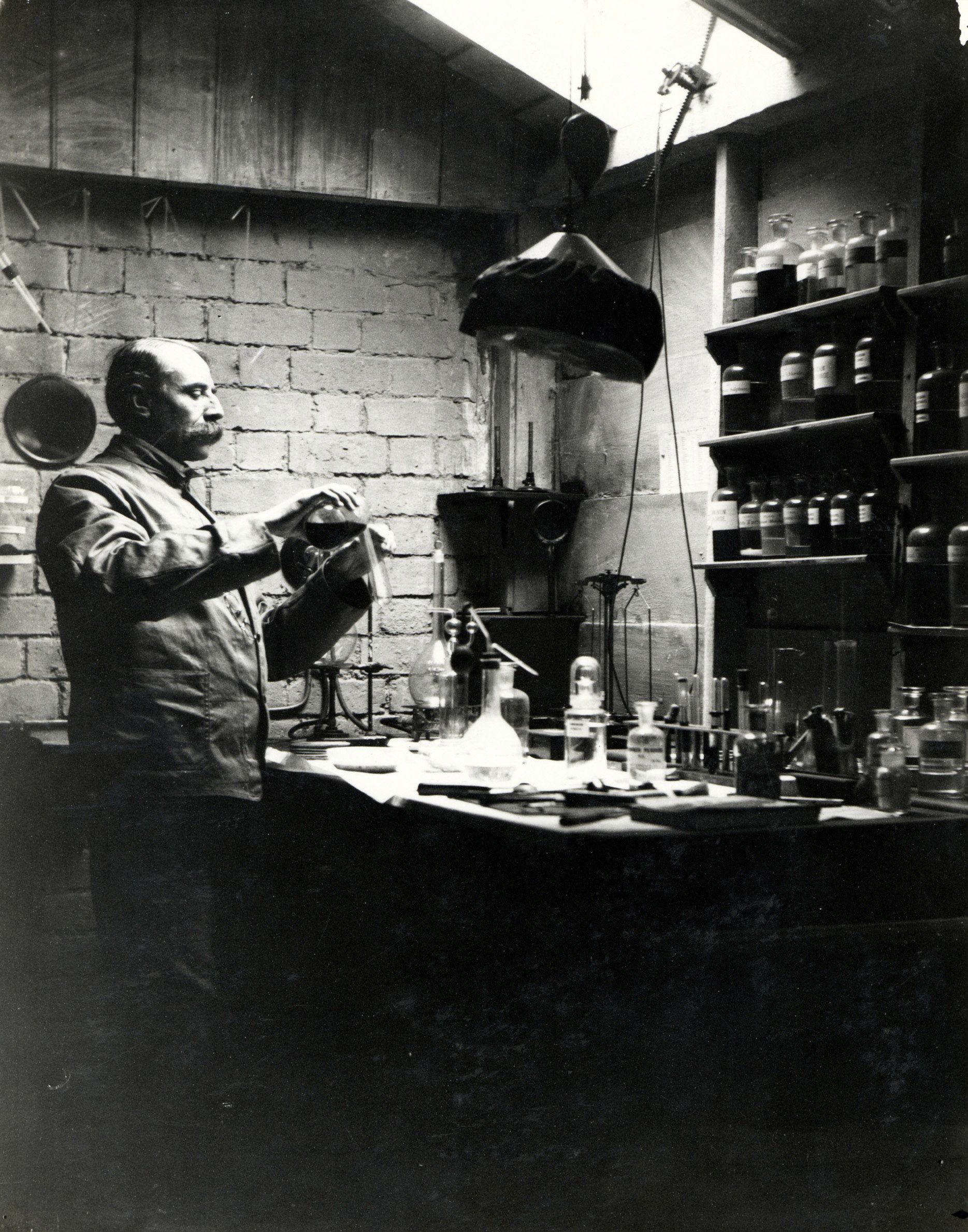
Chemical attraction: Elgar in his shed (1909), which was nicknamed ‘The Ark’ after two doves nested there, and where he pursued his interests in chemistry and mechanics (Bridgeman Images)
Chemical attraction: Elgar in his shed (1909) (Bridgeman Images)
Elgar composed his Introduction and Allegro in 1905 for the strings of the then newly founded LSO. It begins with a stirring gesture that will return at crucial junctures: a great leap, a winding descent. A solo string quartet emerges, to be heard in conversation with the main orchestra through much that follows. There is a sense of trying ideas out, until the viola of the quartet comes forward to lead a plaintive moment. Reconsideration of all this brings a contrast: jittery speed. Violins strike up a fugue (the voices entering at close quarters) at this same tempo to start the Allegro section, but earlier ideas tumble back and eventually take over. It is all a process that will ultimately form one of Elgar’s great melodies, characteristically at once noble and melancholy.
Ludwig van Beethoven (1770–1827)
Piano Sonata (quasi una fantasia) in C sharp minor, Op. 27 No. 2 ‘Moonlight’ – Adagio sostenuto (1st movement)
First performance at the Proms
leading without a break into:

György Kurtág (born 1926)
… quasi una fantasia …, Op. 27 No. 1
(1987–8)
1 Introduzione: Largo –
2 Presto minaccioso e lamentoso: Molto agitato –
3 Recitativo: Grave, disperato –
4 Aria: Adagio molto: Lontano, calmo, appena sentito

Mitsuko Uchida piano
It was Ludwig Rellstab, a poet favoured by Schubert, who first likened the opening movement of Beethoven’s C sharp minor Piano Sonata to the effect of moonlight on water. The analogy, being apt, stuck. Undulations in stillness are projected by arpeggios that resonate both with the bass and with the melody, so that the piano is filled with reverberating harmonics, producing an impression of luminosity. And the atmosphere remains chill and dark, thanks to the low dynamic level and the minor tonality.
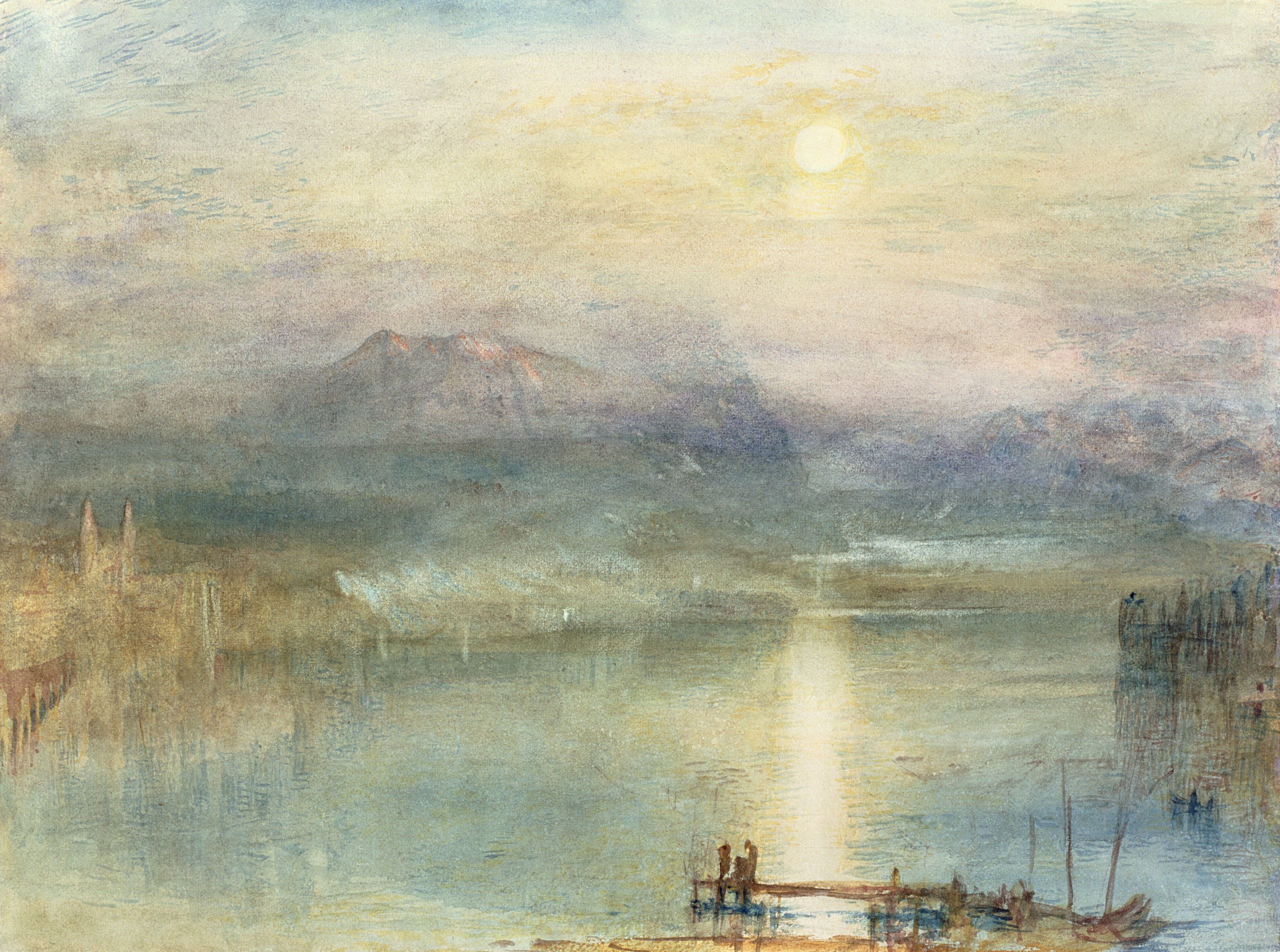
An impression of a moonlit Lake Lucerne (J. M. W. Turner, c1841): the imagined similarity to the first movement of Beethoven’s Piano Sonata Op. 27 No. 2 led to the sonata’s nickname, ‘Moonlight’ (Bridgeman Images)
Lake Lucerne, by J. M. W. Turner, c1841: the first movement of Beethoven’s Piano Sonata Op. 27 No. 2 was likened to moonlight over the lake (Bridgeman Images)
Beethoven published his C sharp minor Piano Sonata, and another with it, under the heading ‘Sonata quasi una fantasia’, and György Kurtág was thinking of both works when he wrote a pair of his own under the same opus number, … quasi una fantasia … in 1987–8, and then a double concerto for piano and cello. Like the Gabrieli pieces we hear tonight, both involve multiple ensembles, … quasi una fantasia … being an exploded piano concerto that features players being disposed in several groups at various distances. Similarly, the musical material is in potent shreds.
Four movements proceed without a break. The first finds freshness in something elementary: slowly falling scales, shadowed and greeted only by untuned percussion until, right at the end, mouth organs creep in.
After this, ‘like a chaotic dream’, comes a fast movement, ‘menacing and mournful’. Now the dialogue between the piano and the surrounding ensembles is full and wild, but hushed. The music spins into wider and wider spaces, in threads of echoing melody and tremulations, then quietens down – to be followed by the implacable roar of the third movement, led by brass and timpani.
The finale, based on a short piece by the composer for string quartet, is again quiet and slow, like the first movement, and similarly based on simple figures: a touch of folk song, a descending scale.
Giovanni Gabrieli ed. Eric Crees
Sacrae symphoniae (1597) – Canzon noni toni a 12

Tonight’s second Gabrieli canzon, in the ninth tone, is again for three ensembles, and gloriously spirited in its echo effects.
Thomas Adès (born 1971)
Dawn
(2020)
±«Óătv commission: world premiere
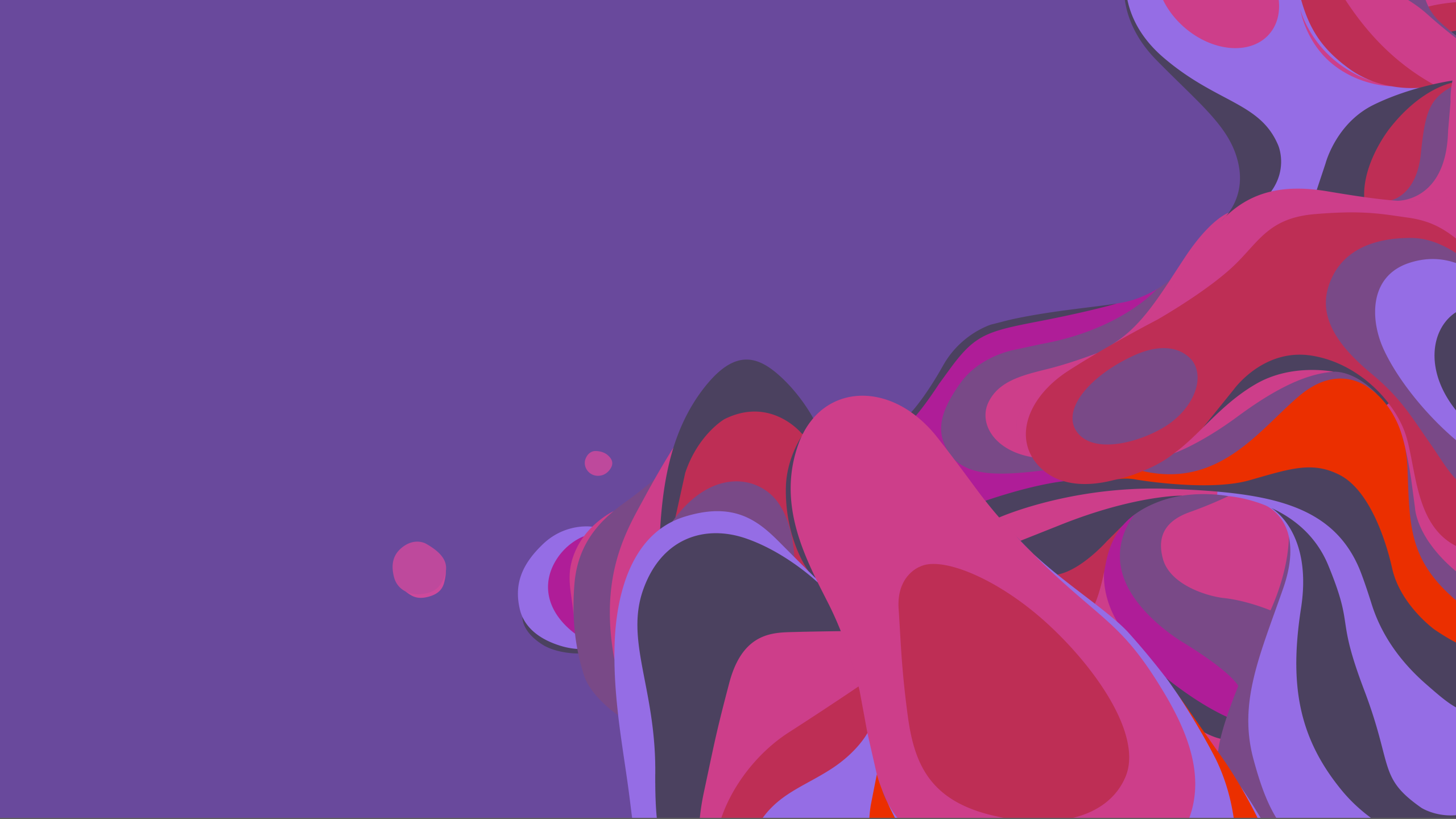
Mitsuko Uchida piano
Daybreak is imagined in this piece by Thomas Adès written specifically for tonight’s Prom, specifically, that is, for an orchestra whose seating is less packed than usual.
Adès calls his Dawn a ‘chacony’, a composition based on a repeating bass pattern. Other terms for this kind of composition are ‘chaconne’ and ‘passacaglia’, but Adès has chosen the form used by his (distant) English predecessor Henry Purcell, and created a bass line as elemental as one of Purcell’s.
Beginning on middle C, the line steps mellifluously down and returns; it is a wheel revolving almost to the end, passed from harp to piano to gongs, where it settles. With only tiny exceptions, everything could be played on the white notes of the piano, but these white notes are coloured by melodies and conversations moving through the expanded space of the orchestra. The wheel turns slowly, steadily gaining force towards the final sunburst.
Ralph Vaughan Williams (1872–1958)
Symphony No. 5 in D major
(1938–43, rev. 1951)

1 Preludio: Moderato
2 Scherzo: Presto misterioso
3 Romanza: Lento
4 Passacaglia: Moderato
Everyone is back on the platform for Vaughan Williams’s Fifth Symphony, which was first heard in this same hall during the 1943 Proms, conducted by the composer. For 30 years Vaughan Williams had been working on an opera on Bunyan’s The Pilgrim’s Progress, but, despairing of ever completing it, he had now decided to put his thoughts and his musical ideas into a symphony – into pure music held in a state of glow. He eventually went back to the opera and completed it for a Covent Garden premiere in 1951, by which time some of the themes were already familiar from this symphony, notably the gentle horn call with which the work begins.
Out of this grows a string melody, harking back to former times, and hence the whole first movement, ‘Preludio’. The music darkens and quickens for its middle section, after which the horns restore light and balance, on the way to climax and rest.

A scene from English National Opera’s 2012 production of The Pilgrim's Progress, the as-yet-unfinished opera from which Vaughan Williams borrowed several themes for use in his Fifth Symphony (Laurie Lewis/Bridgeman Images)
A scene from English National Opera's 2012 production of The Pilgrim's Progress (Laurie Lewis/Bridgeman Images)
We might associate the short, rhythmically unsettled Scherzo with the snares and delusions to which Bunyan’s pilgrim Christian is subjected. More certainly the slow movement brings the hero rest, for Vaughan Williams indicated as much in his manuscript. The music weaves in constant contemplation of its themes and their constituent motifs. Its winding-down is by way of a solo for the orchestra’s leader.
In being a passacaglia, the last movement resonates with Adès’s Dawn, which immediately preceded the symphony in tonight’s performance. Having brought his recurring theme to a culmination, Vaughan Williams begins introducing memories of his first movement, whose wave motion comes surging back to restore the original golden calm. This may also be sunset.
Programme notes © Paul Griffiths
A critic for over 30 years, including for ‘The Times’ and ‘The New Yorker’, Paul Griffiths is an authority on 20th- and 21st-century music. Among his books are studies of Boulez, Cage and Stravinsky, as well as ‘A Concise History of Western Music’ and ‘The New Penguin Dictionary of Music’. He also writes librettos and novels. In his most recent novel ‘Mr. Beethoven’, everything the composer says is drawn from his letters.
Biographies
Sir Simon Rattle conductor
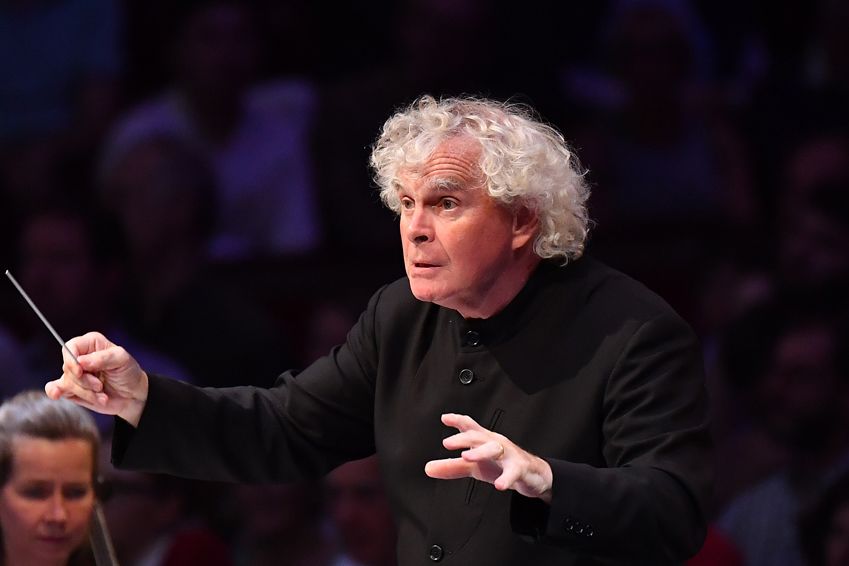
Sir Simon Rattle (Chris Christodoulou/±«Óătv)
Sir Simon Rattle (Chris Christodoulou/±«Óătv)
Born in Liverpool, Sir Simon Rattle studied at the Royal Academy of Music in London. In 1980 he became Principal Conductor and Artistic Adviser of the City of Birmingham Symphony Orchestra, becoming Music Director in 1990. From 2002 to 2018 he was Artistic Director and Chief Conductor of the Berlin Philharmonic and since 2017 he has been Music Director of the London Symphony Orchestra. From 2013 to 2018 he and the Berlin Philharmonic took up residency at the Baden-Baden Easter Festival, performing a variety of operatic and symphonic repertoire. He has also performed with the orchestra at both the Aix-en-Provence and Salzburg Easter festivals.
He regularly conducts the Los Angeles and Vienna Philharmonic orchestras, Boston and Bavarian Radio Symphony orchestras, Philadelphia Orchestra and Staatskapelle Berlin. He is also a Principal Artist of the Orchestra of the Age of Enlightenment and Founding Patron of Birmingham Contemporary Music Group. Recent opera companies with which he has worked include the Deutsche Oper Berlin, Berlin Staatsoper, Metropolitan Opera, New York, Royal Opera, Covent Garden and the Vienna Staatsoper.
He has made over 70 recordings, many of which have received international accolades, including a Grammy Award. He was knighted in 1994 and in 2014 he received the Order of Merit.
Mitsuko Uchida piano
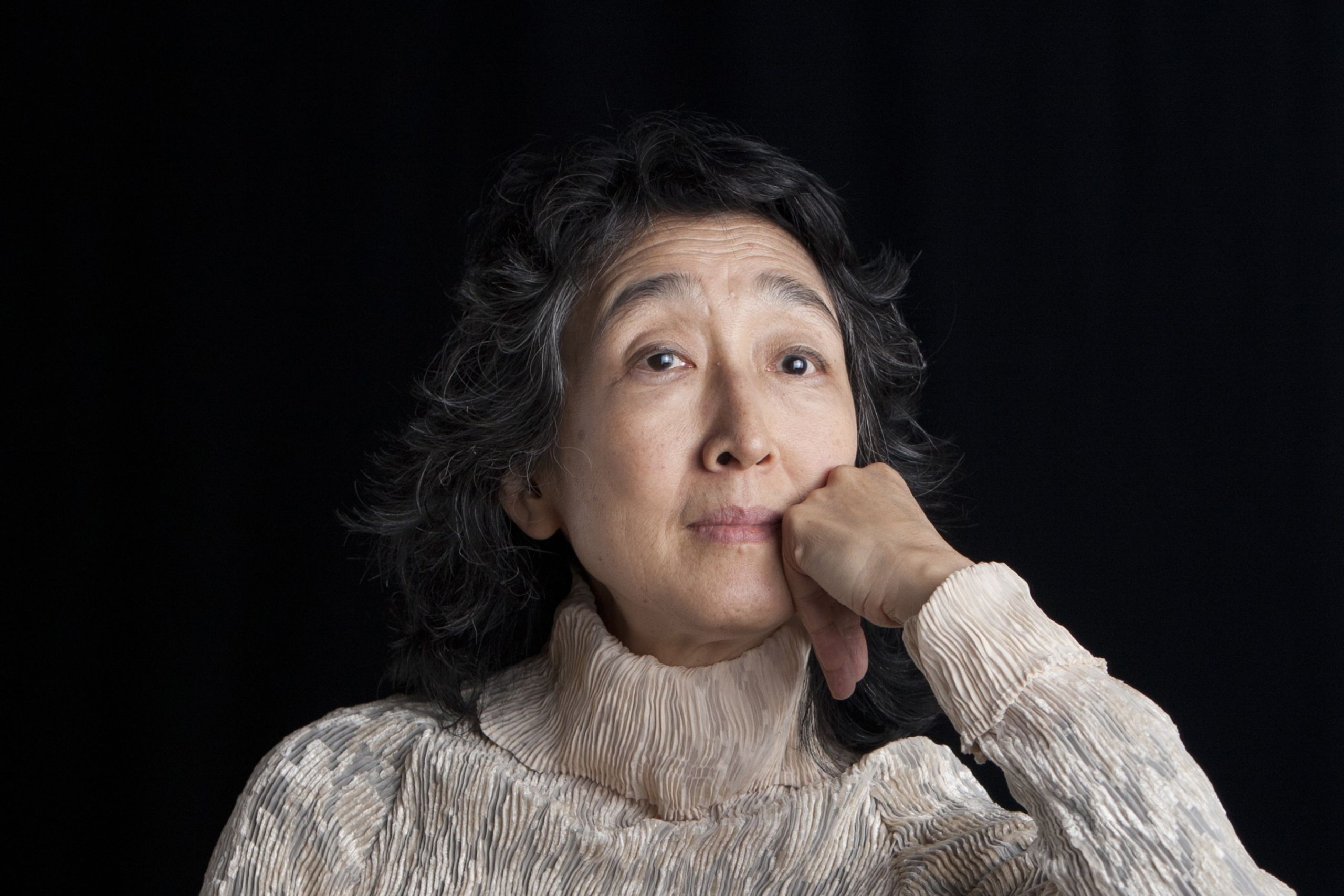
Mitsuko Uchida (Justin Pumfrey/Decca)
Mitsuko Uchida (Justin Pumfrey/Decca)
Mitsuko Uchida is renowned for her interpretations of Mozart, Schubert, Schumann and Beethoven, as well as of the works of Alban Berg, Arnold Schoenberg, Anton Webern and György Kurtág. She has enjoyed close relationships with the world’s leading orchestras, including the Berlin Philharmonic, Royal Concertgebouw Orchestra, Amsterdam, Bavarian Radio Symphony Orchestra, London Symphony Orchestra, London Philharmonic Orchestra and – in the USA – the Chicago Symphony and Cleveland Orchestra. She also appears regularly in recital at leading international venues and is a frequent guest at the Salzburg Mozartwoche and Salzburg Festival.
She is Co-Artistic Director of the Marlboro Music Festival in Vermont, USA, with Jonathan Biss, having served as Co-Artistic Director with Richard Goode (1990–2013) and Artistic Director (2013–18). Since 2016 she has been an Artistic Partner of the Mahler Chamber Orchestra.
Mitsuko Uchida’s multi-award-winning discography includes the complete piano sonatas of Mozart and Schubert. She is the recipient of two Grammy Awards and her recording of Schoenberg’s Piano Concerto with Pierre Boulez and the Cleveland Orchestra won a Gramophone Award for Best Concerto.
A founding member of the Borletti–Buitoni Trust, she is a recipient of the Golden Mozart Medal from the Salzburg Mozarteum and the Praemium Imperiale from the Japan Art Association. She has also been awarded the Gold Medal of the Royal Philharmonic Society and holds honorary degrees from the Universities of Oxford and Cambridge. In 2009 she was made Dame Commander of the Order of the British Empire.
London Symphony Orchestra
The London Symphony Orchestra was established in 1904 as one of the first orchestras shaped by its musicians. Today it is ranked among the world’s leading orchestras, with a family of artists that includes Music Director Sir Simon Rattle, Principal Guest Conductors Gianandrea Noseda and François-Xavier Roth, and Conductor Laureate Michael Tilson Thomas.
The LSO is Resident Orchestra at the Barbican in the City of London and also reaches international audiences through touring, artistic residencies and digital partnerships.
Through a world-leading education and community programme, LSO Discovery, the LSO connects people from all walks of life with the power of great music. LSO musicians are at the heart of this unique programme, leading workshops, mentoring bright young talent, performing at free concerts for the local community and using music to support adults with learning disabilities. LSO musicians also visit children’s hospitals and lead training programmes for music teachers.
In 1999 the LSO formed its own, innovative recording label, LSO Live, which has released over 150 recordings to date. As a leading orchestra for film, the LSO has entertained millions with classic scores for Star Wars, Indiana Jones, The Shape of Water and many others.
Through inspiring music, educational programmes and technological innovations – including performances streamed online – the LSO’s reach extends far beyond the concert hall.
First Violins
Carmine Lauri Leader
Clare Duckworth
Ginette Decuyper
Laura Dixon
Gerald Gregory
Maxine Kwok
Claire Parfitt
Laurent Quenelle
Harriet Rayfield
Sylvain Vasseur
Second Violins
David Alberman
Thomas Norris
Sarah Quinn
Miya Vaisanen
Matthew Gardner
Csilla Pogany
Belinda McFarlane
Andrew Pollock
Violas
Edward Vanderspar
Gillianne Haddow
Malcolm Johnston
Anna Bastow
Stephen Doman
Robert Turner
Cellos
Rebecca Gilliver
Alastair Blayden
Jennifer Brown
Eve-Marie Caravassilis
Hilary Jones
Amanda Truelove
Double Basses
Colin Paris
Patrick Laurence
Thomas Goodman
José Moreira
Flutes
Gareth Davies
Sharon Williams
Piccolo
Sharon Williams
Oboes
Olivier Stankiewicz
Juliana Koch
Cor Anglais
Rosie Jenkins
Clarinets
Chris Richards
Chi-Yu Mo
E-flat Clarinet
Chi-Yu Mo
Bass Clarinet
Katy Ayling
Bassoons
Rachel Gough
Dominic Tyler
Contrabassoon
Dominic Morgan
Horns
Laurence Davies
Angela Barnes
Trumpets
Jason Evans
Aaron Akugbo
Niall Keatley
James Fountain
Katherine Smith
Kaitlin Wild
Trombones
Peter Moore
James Maynard
Matthew Knight
Ryan Hume
Bass Trombones
Paul Milner
Dan West
Tuba
Ben Thomson
Timpani
Nigel Thomas
Percussion
Neil Percy
David Jackson
Sam Walton
Tom Edwards
Paul Stoneman
Harp
Bryn Lewis
Celesta
Elizabeth Burley
Cimbalom
Christopher Bradley
We hope you enjoyed tonight’s performance
For full details of ±«Óătv Proms 2020 concerts and broadcasts, visit bbc.co.uk/proms
Online programme produced by ±«Óătv Proms Publications
